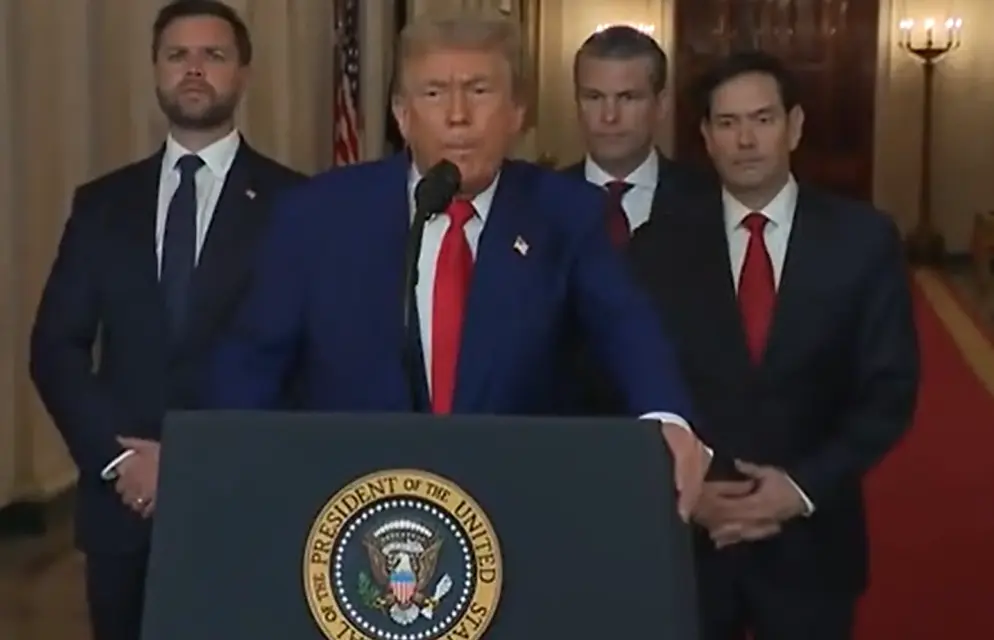
As the July 9 tariff deadline looms, Donald Trump’s pledge for “much less tariffs” injects fresh momentum
A Deal Reimagined: Trump’s Tariff Pivot Sparks Fresh Talks
Tariff Truce – In a dramatic turn of events, U.S. President Donald Trump has reignited hopes for a long-awaited trade agreement with India by promising a deal with “much less tariffs.” Speaking aboard Air Force One, Trump declared, “We are going to have a deal with India… a different kind of deal… one where we are able to go in and compete”.
Table of Contents
This statement comes at a critical juncture. The 90-day pause on reciprocal tariffs imposed during Trump’s earlier administration expires on July 9, threatening to reintroduce a steep 26% duty on Indian exports to the U.S. and vice versa. The looming deadline has pushed both sides into high-stakes negotiations, with Indian officials extending their stay in Washington to hammer out a last-minute resolution.
The proposed Bilateral Trade Agreement (BTA) aims to address long-standing issues, including market access, tariff parity, and regulatory barriers. While the U.S. seeks lower duties on agricultural and dairy products, India is pushing for relief on labour-intensive exports like textiles, leather, and gems.
Trump’s latest remarks suggest a willingness to compromise possibly to secure a foreign policy win ahead of the WTO’s upcoming ministerial meeting. But whether this rhetorical shift translates into a signed deal remains uncertain.
Tug of Trade: India’s Red Lines and America’s Demands
Despite the renewed optimism, the path to a deal is riddled with challenges. India has taken a firm stance on protecting its agricultural sector, refusing to open up its dairy market to foreign competition a red line it has never crossed in any trade pact. The U.S., meanwhile, is pressing for reduced duties on apples, almonds, and genetically modified crops.
Indian negotiators, led by Chief Trade Envoy Rajesh Agrawal, are also demanding preferential access for Indian goods in the U.S. market. These include high-employment sectors such as garments, engineering goods, and seafood. The stakes are high: failure to reach a deal could see Indian exports hit with a 26% tariff, up from the current 10%, severely impacting small and medium enterprises.
External Affairs Minister S. Jaishankar, speaking in New York, acknowledged the complexity of the talks: “We are in the middle hopefully more than the middle of a very intricate trade negotiation… I cannot guarantee it, because there’s another party to that discussion”.
The urgency is palpable. Both sides are racing to finalize an interim agreement before the July 9 deadline, which would prevent the automatic reimposition of tariffs and lay the groundwork for a broader trade pact by the end of the year.
Strategic Stakes: Beyond Tariffs and Trade
This trade standoff is more than an economic skirmish it’s a litmus test for the evolving India-US strategic partnership. With China’s assertiveness reshaping global alliances, Washington and New Delhi have deepened defense and technology ties. A successful trade deal would cement this alignment and send a strong signal to global markets.
For Trump, the deal offers a chance to showcase his deal-making prowess and reassert U.S. leadership in Asia. For India, it’s an opportunity to boost exports, attract investment, and reinforce its image as a reliable global partner.
However, the political calculus is delicate. Concessions on agriculture could trigger backlash from Indian farmers, while Trump faces scrutiny over trade imbalances and domestic job losses. Both leaders must balance economic pragmatism with political optics.
If the deal materializes, it could unlock a new era of economic cooperation, with ambitions to grow bilateral trade from $191 billion to $500 billion by 2030. But if talks collapse, the fallout could be swift and severe disrupting supply chains, inflaming nationalist rhetoric, and souring diplomatic ties.
Conclusion:
As the clock ticks toward the July 9 deadline, the India-US trade deal hangs in the balance. Trump’s promise of “much less tariffs” may have opened a diplomatic window but whether it leads to a breakthrough or another breakdown depends on what both sides are willing to give. One thing is clear: the world is watching, and the stakes have never been higher.
Stay updated with the latest news on Rapido Updates. Keep yourself updated with The World, India News, Entertainment, Market, Automobile, Gadgets, Sports, and many more
2 thoughts on “Tariff Truce in Sight: Trump’s Bold Promise Rekindles Hope for India-US Trade Breakthrough”